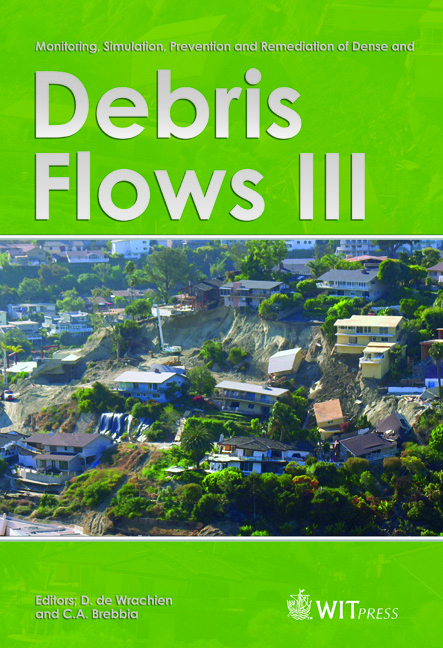Soil Moisture Retrieval With Remote Sensing Images For Debris Flow Forecast In Humid Regions
Price
Free (open access)
Transaction
Volume
67
Pages
12
Page Range
89 - 100
Published
2010
Size
2,621 kb
Paper DOI
10.2495/DEB100081
Copyright
WIT Press
Author(s)
Y. Zhao, H. Yang & F. Wei
Abstract
Soil moisture is a key parameter in debris flow prediction for its influence on the critical rainfall triggering debris flow. Soil moisture can be obtained by ground measurement. However, it is difficult to extend these limited observing data to the regional scale because of the heterogeneity of land surface. The Temperature- Vegetation Dryness Index (TVDI) is a common method of estimating regional soil moisture by the images of MODIS, because of its moderate spatial resolution and high temporal resolution. However, because the basic assumption of the TVDI method is that pixels from the study region can cover the entire range of soil moisture conditions and vegetation fractions, it is difficult to determine the actual dry edge of the space in humid regions. The Crop Water Shortage Index (CWSI) calculated by actual evapotranspiration and potential evapotranspiration does not need fitting to the dry edge and wet edge. CWSI further considers about the influence of vegetation. In this paper, we applied both TVDI and CWSI methods to retrieving soil moisture using remote sensing and meteorological data in Zhejiang Province, which has a humid climate. Among CWSI, the actual and potential evapotranspiration are calculated by the SEBS model. CWSI can also directly express the extent of soil moisture. In surface soil (0-10cm), the correlation coefficient of CWSI and measured relative soil moisture (RSM) reached -0.89. Keywords: remote sensing, soil moisture, TVDI, CWSI, debris flow forecast, humid region.
Keywords
remote sensing, soil moisture, TVDI, CWSI, debris flow forecast, humid region





